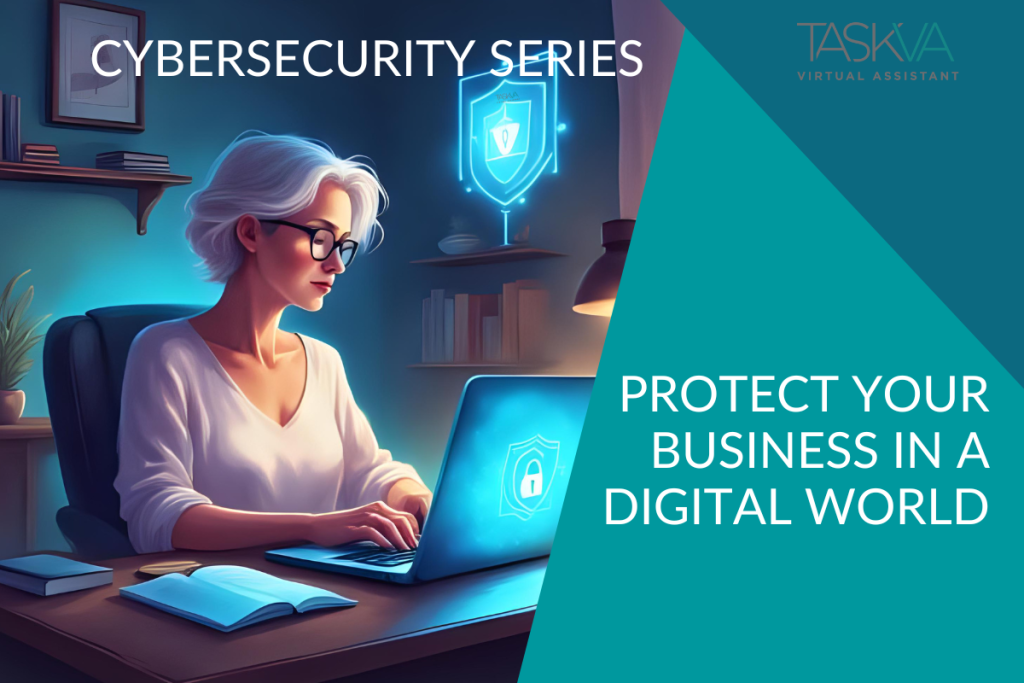
Cybersecurity for Remote Work: Protect Your Business in a Digital World

In today's business world, remote work isn't just a perk—it's the new normal. Whether you're an accountant handling sensitive client data, a realtor managing confidential property documents, or a small business owner running operations from your laptop, the shift to hybrid or fully remote work has opened up new opportunities—and new risks.
Cybersecurity is no longer an "optional extra." It's a critical part of protecting your business, your clients, and your peace of mind. The more you understand the threats and how to defend against them, the safer and more productive your remote team will be.
Read on to discover why cybersecurity is essential for remote work, the common risks businesses face, and practical steps you can take to safeguard your digital assets. Plus, we'll show how our Cybersecurity for the Remote Office E-Course can help you implement these strategies efficiently and confidently.
Why Cybersecurity Matters More Than Ever for Remote Teams
The transition to remote work has many benefits: flexible schedules, expanded talent pools, and reduced overhead costs. But it also comes with unique security challenges:
- Unsecured Home Networks
Unlike a traditional office network, home Wi-Fi is often less secure. Weak passwords or outdated routers can make it easier for hackers to gain access. - Personal Devices Mixing with Work
Many remote employees use personal laptops, tablets, or phones for work tasks. If these devices are not correctly secured, sensitive business information can be at risk. - Increased Phishing Attacks
Cybercriminals know remote employees may be less cautious or distracted. Fake emails, urgent login requests, or fraudulent attachments are all tools hackers use to gain access. - Cloud Storage Vulnerabilities
Storing files in the cloud might be convenient, but without proper permissions and security protocols, you risk exposing confidential data.
The reality is simple: if your remote work setup isn't secure, your business, your employees, and your clients could all be vulnerable to cyber threats.
Real-Life Example: Cybersecurity in Action
I worked with a small accounting firm that recently shifted to remote work. The team noticed that employees were using personal devices without VPNs or secure passwords. After implementing a cybersecurity plan—including VPNs, password managers, and mandatory training—they reduced security incidents by 80%.
Common Cybersecurity Risks for Remote Work
Understanding the threats is the first step to preventing them. Here are some of the most common risks for remote teams:
- Weak Passwords and Credential Theft
Reusing passwords or using weak passwords is one of the easiest ways for hackers to gain access to business accounts. In today's digital world, multi-factor authentication (MFA) is a must. - Ransomware Attacks
Ransomware can lock you out of your files until you pay a fee, and spreads easily when devices are connected to insecure networks. - Unsecured Video Conferences
Virtual meetings are vital for remote teams, but without proper security settings, sensitive discussions could be intercepted. - Outdated Software and Devices
Failing to update software, antivirus programs, and operating systems leaves gaps for cybercriminals to exploit. - Human Error
The majority of security breaches aren't from sophisticated hackers—they're from simple mistakes, like clicking a suspicious link or sharing confidential information by accident.
How to Protect Your Business While Working Remotely
The good news? Many of these risks are preventable. Here's a roadmap to creating a secure remote work environment:
- Educate Your Team
Knowledge is your first line of defense. Train employees to recognize phishing scams, secure their devices, and follow best practices for handling sensitive data. - Implement Strong Password Policies
Encourage unique, complex passwords and use password managers to keep track of them. Always enable multi-factor authentication for extra protection. - Secure Your Network
Use VPNs (Virtual Private Networks) to encrypt data, ensure home routers are secure, and keep firmware updated. - Use Cloud Security Wisely
Restrict cloud storage permissions to only those who need access, and regularly audit your shared files. - Regular Software Updates
Keep all software, apps, and operating systems up to date. Hackers exploit outdated programs because vulnerabilities are well-documented. - Backup Critical Data
Regular backups protect your business in case of ransomware attacks or accidental data loss. Store backups securely and test them periodically. - Invest in Professional Cybersecurity Training
Knowledge without action is incomplete. Our Cybersecurity Course walks you through practical strategies, policies, and tools to safeguard your business.
Cybersecurity and Client Trust
No matter what business you run, no matter the size, as a business owner, your clients trust you with sensitive information. A breach could damage your reputation, lose clients, and cost thousands—or even more—in fines and recovery costs.
Taking cybersecurity seriously shows your clients that you value their trust and are committed to protecting their data. A proactive approach doesn't just prevent attacks—it strengthens your brand. With the right steps, any business can operate securely from anywhere—without sacrificing productivity or convenience.
Don't wait for a cyber attack to take action!
Secure your business today by training your team, updating your systems, and implementing best practices. Enroll in our Cybersecurity for the Remote Office E-Course now and make remote work safe and productive for your business!
